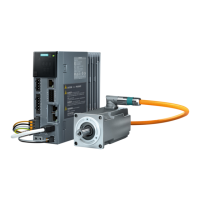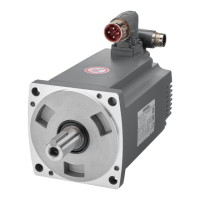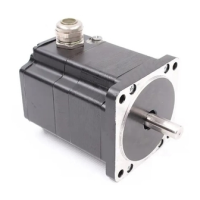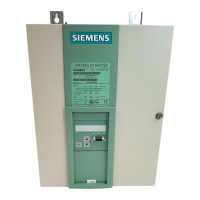SINAMICS S200 PROFINET servo drive system with SIMOTICS S-1FL2
A5E52388930A AA, 07/2023
11
Mount or remove the output elements (for example, couplings, gear wheels, and belt pulleys) by using suitable devices only.
• Use the threaded hole in the shaft extension.
• If required, heat up the output elements before mounting or removing.
• If necessary, completely balance the motor together with the output elements according to ISO 1940.
• When removing the output elements, use an intermediate disk to protect the centering in the shaft extension.
Procedure
Proceed as follows to attach an output element (for example, a coupling) to the motor:
1. Select a coupling.
Use a flexible coupling with high torsional rigidity specifically designed for servo motors, which can transfer the motor
torque to the mechanics and compensate radial, axial, and angular misalignments.
2. Install the coupling.
Do not strike the shaft when installing a coupling. Ensure that the radial and axial forces are smaller than the allowable
maximum values specified in the Operating Instructions.
3. Align the coupling.
When a motor is used with a flange coupling, the radial deviation must be smaller than 0.03 mm; otherwise, the bearing
will be damaged. The required alignment accuracy varies with the motor speed and the coupling type. Determine the
accuracy according to actual applications.
– Rotate the motor shaft and the machine shaft to align the coupling.
– An alignment accuracy test is preferred. If unachievable, judge the accuracy by observing whether the coupling can
slide smoothly on both shafts.
4. Realign the coupling.
If the coupling gives out abnormal sounds, you should refer to the step "3. Aligning the coupling" to realign the coupling
until the sounds disappear.
5. Measure tension.
The belt tension must be smaller than the allowable radial forces of the motor.
– Measure the belt tension at multiple points using a tension meter while turning the motor shaft by 45°.
– Reduce the axial misalignment of the belt-pulleys to keep the axial forces to the motor shaft to a minimum.

